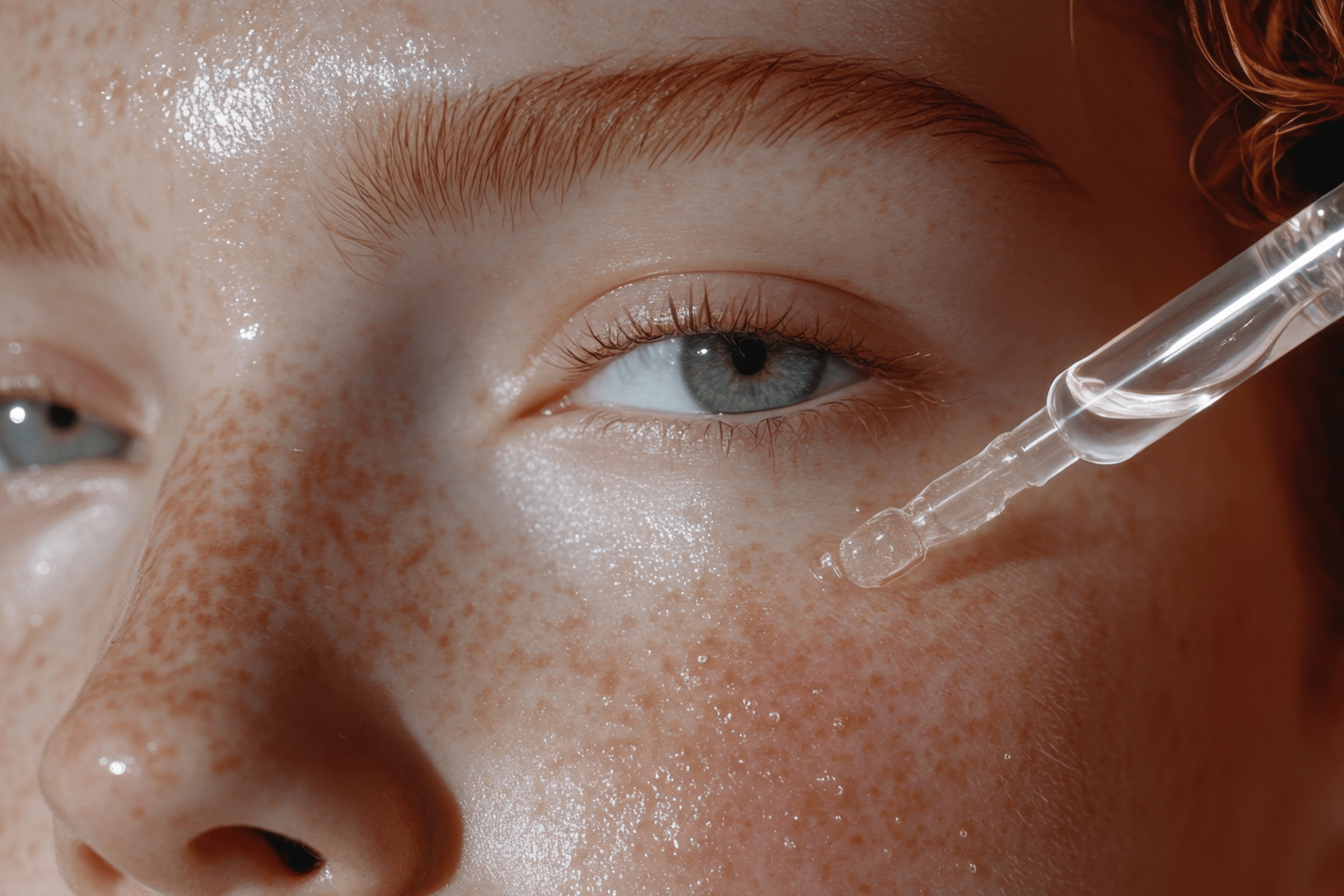
Is Botox Toxic? Here’s the Real Story
Botox often gets a bad rap—some call it toxic, others swear by its wrinkle-busting magic. Let’s cut through the noise with science-backed clarity: Botox is an FDA-approved treatment shown to be safe and effective when administered properly by qualified professionals. That doesn’t make it the right choice for everyone—and that’s okay. Below, we outline the benefits, the risks, and the context so you can decide what aligns with your values.
TL;DR (Quick Takeaways)
-
Botox is FDA-approved and supported by strong clinical data.
-
Results are temporary, typically 3–4+ months, requiring repeat visits.
-
Side effects are usually mild and temporary, but technique and provider experience matter.
-
Most studies are industry-funded—important to know when weighing the evidence.
-
Alternatives exist (like peptides, niacinamide, and professional treatments) for those who want non-invasive options.
What Is Botox, Truly?
Botox is the trade name for onabotulinumtoxinA, a neuromodulator that weakens muscle activity by blocking signals at neuromuscular junctions (StatPearls – NCBI Bookshelf). When facial muscles contract repeatedly—think frowning, squinting, or raising your brows—they crease the skin above them, eventually etching fine lines and deeper wrinkles. By temporarily relaxing these muscles, Botox smooths the skin’s surface and slows the formation of new lines. This is why it’s sometimes called a “preventative” treatment: less repetitive motion means less wear-and-tear on the skin. It’s been extensively studied, clinically validated, and regulated by the FDA. But does that mean it's for you?
Safety & Efficacy — What the Science Says
Randomized & Systematic Evidence
-
A meta-analysis of randomized controlled trials found that a single 20-unit dose of botulinum toxin type A is effective and safe for glabellar (frown) lines, without a significant increase in adverse events versus placebo (PubMed).
-
A systematic review concluded that aesthetic use of botulinum toxin A has a solid short-term safety profile across clinical studies (PubMed).
-
A 2023 quantitative safety evaluation supported a favorable safety profile in cosmetic patients, with side effects generally mild and transient (PubMed).
-
Network/meta-analytic work continues to compare efficacy and safety among different BoNT/A formulations for glabellar lines (PubMed).
Therapeutic Indications (Context for Safety Data)
-
OnabotulinumtoxinA is FDA-approved for chronic migraine prevention; pooled PREEMPT trial results demonstrated efficacy and tolerability (PubMed; PMC).
Plain-English take: In regulated settings and appropriate doses, Botox has a strong evidence base for both aesthetic and medical uses. Most side effects in cosmetic use are temporary and manageable.
A Note on Study Funding
Most large Botox trials are industry-funded (historically by Allergan; now AbbVie), which is standard for FDA-regulated drugs. These studies are peer-reviewed and form the basis for approvals, but manufacturer sponsorship can introduce bias. Independent, long-term studies exist but are more limited. We share this so you can weigh both the quality of evidence and the context of who funds it while making your choice.
FDA Approval & What It’s Approved For
-
Cosmetic: Temporary improvement of moderate to severe glabellar lines, forehead lines, and crow’s feet (see clinical evidence above and prescribing information).
-
Therapeutic: Chronic migraine (PREEMPT program), cervical dystonia, blepharospasm, spasticity, hyperhidrosis, and other indications (StatPearls – NCBI Bookshelf; PubMed; PMC).
Pros & Cons — Your Balanced Breakdown
Potential Benefits
-
Non-surgical line softening with minimal downtime; results visible within days and typically lasting several months (StatPearls – NCBI Bookshelf; PubMed).
-
Preventative effect for expression lines by reducing repetitive creasing of the skin over time (StatPearls – NCBI Bookshelf).
-
Well-studied with randomized and systematic evidence supporting efficacy and safety in aesthetic use (PubMed; PubMed; PubMed).
-
Versatility beyond aesthetics (e.g., migraines), contributing to a robust overall safety dataset (PubMed; PMC).
Potential Drawbacks
-
Temporary results & ongoing cost: Effects generally last 3–4+ months in many responders, requiring repeat treatments (PubMed).
-
Common, usually mild side effects: Headache, local pain, bruising, or asymmetry; typically resolve as the product wears off (PubMed).
-
Specific aesthetic complications: Eyelid ptosis is the most reported; pooled estimates range around 3% with variability by technique and anatomy (PMC; PMC).
-
Technique sensitivity: The glabellar/forehead area involves interrelated muscles; injector experience and anatomical planning matter to avoid unwanted effects (PubMed; PubMed).
-
Overuse can weaken muscles: Repeated treatments may contribute to local muscle weakening; most changes are reversible after a break (StatPearls – NCBI Bookshelf).
-
Values alignment: Not everyone wants injectables. Ethical preferences, needle-averse feelings, or a “clean-beauty-only” approach are valid reasons to opt out.
-
Industry-funded evidence: Much high-quality data comes from manufacturer-sponsored trials; keep this in mind when weighing benefits vs. risks.
How to Decide — A Checklist
-
Motivation: Am I doing this for me?
-
Provider: Do I have access to a licensed, experienced injector who explains dose, placement, and aftercare?
-
Plan & Budget: Am I comfortable with maintenance (every 3–4+ months for many) and cumulative cost?
-
Alternatives I’ve Tried: Daily SPF, sleep, stress management, professional exfoliation or peels, microcurrent, microneedling, or topical actives like niacinamide and peptides (consistent, hormone-safe skincare can go far).
-
My Values: Does choosing (or skipping) Botox feel aligned with my wellness philosophy today?
FAQ
Q: How long does Botox last?
Typically 3–4 months, sometimes longer in first-time users or with consistent treatments.
Q: Is Botox safe long term?
Evidence supports long-term safety in both cosmetic and therapeutic settings, but most studies are funded by the manufacturer.
Q: What’s the youngest age to start Botox?
There’s no FDA minimum for cosmetic use, but most providers recommend waiting until mid-20s to 30s, when lines appear at rest.
Q: Are there natural alternatives?
Yes. Ingredients like backuchiol, niacinamide, peptides, and consistent SPF offer long-term wrinkle support. Professional treatments like microneedling or facial massage also help.
A Final Thought
We’re pro-informed choice. Botox is an FDA-approved, well-studied option with clear benefits and real considerations. If it helps you feel more like you—amazing. If you’d rather keep it needle-free—also amazing. Either way, we’re here to make your skincare journey simpler, safer, and more you.
Live Free. Wrinkles Optional.
Clean Living for Real Life. Free Living Co is a brand and marketplace designed to be your go-to destination for expertly curated products that make clean living and everyday well-being simple—and more fun.
Here are your everyday routines and weekly rituals filled with time hacks, mood boosters, steps for slowing down, and cleaning things up. We hope you enjoy living free!


Leave a comment
This site is protected by hCaptcha and the hCaptcha Privacy Policy and Terms of Service apply.